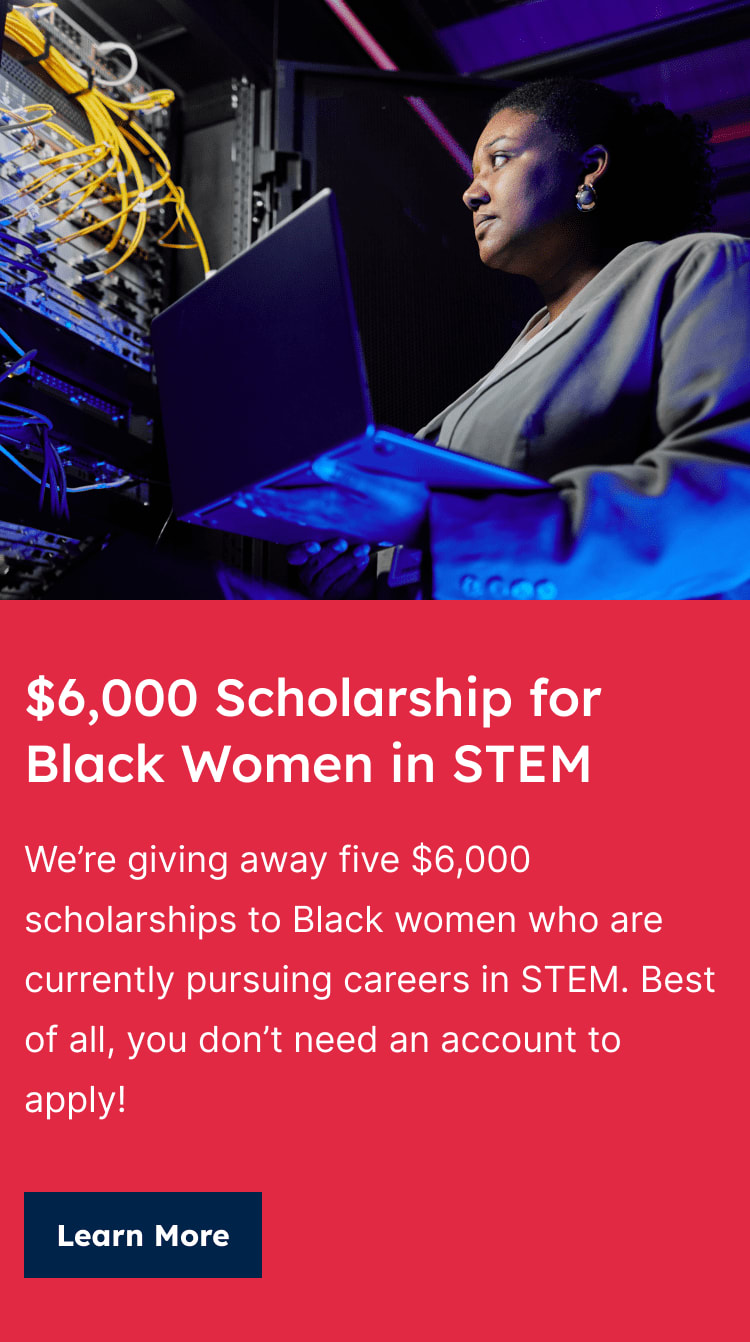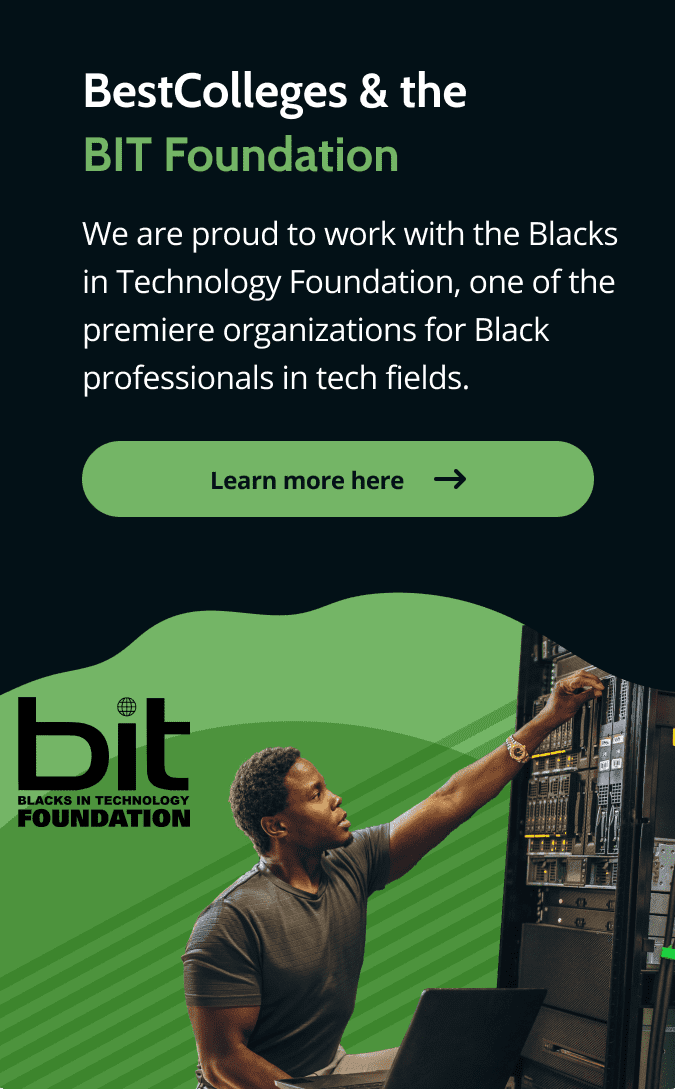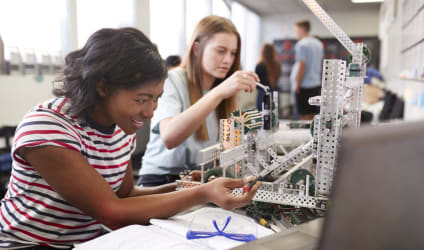The Complete Guide for BIPOC Students in STEM
Writer
Editor, Reviewer & Writer
Reviewer & Writer
Writer
Editor, Reviewer & Writer
Reviewer & Writer
- There is a success gap for BIPOC in STEM throughout the student-to-professional pipeline.
- This diversity gap in STEM exists due to systemic issues that favor privilege.
- Colleges and universities can implement best practices to bridge the STEM diversity gap.
- Bridging the diversity gap in STEM helps tackle biases in science to better serve our diverse societies.
The U.S. Census Bureau reported that there was a 10% increase in racial diversity in the United States between 2010 and 2020. Science, technology, engineering, and mathematics (STEM) are fields of study and occupations that advance society. However, STEM decision-makers at the academic and employment level have not taken sufficient steps to include Black, Indigenous, and people of color (BIPOC) in STEM, according to the Pew Research Center.
This lack of diversity is concerning, but there are opportunities for colleges and universities to implement best practices to bridge the STEM diversity gap. Keep reading to explore important statistics and resources for BIPOC college students who wish to pursue academic majors and careers in STEM.
Key Statistics for BIPOC Students in STEM
-
A 2019 study on racial and ethnic gaps in STEM shows that Black students who are matriculated in STEM degrees complete these degrees at about half the rate of white students. -
This same study shares that Latino/a students leave STEM at twice the rate of white students. -
A study titled The Burden of Being "Model" shows that Asian students receive STEM degrees at twice the rate of the general college population. However, a study from the University of Buffalo reports that Filipino, Vietnamese, and Thai students enroll and complete STEM degrees at lower rates than students of other Asian backgrounds. -
According to the Pew Research Center, only 4% of undergraduate STEM majors are Indigenous people and Pacific Islanders.

5 Reasons Why the Diversity Gap in STEM Continues to Persist
A 2019 study called, "Does STEM Stand Out?" explores the following reasons to explain why there is such a racial and ethnic gap of diversity in STEM:
Opportunity hoarding excludes BIPOC students in STEM: Opportunity hoarding, a term used by sociologist Charles Tilly in his book, "Durable Inequality," is when privileged groups withhold access to opportunities from marginalized groups. When gate-keeping faculty, staff, and students don't give BIPOC in STEM equitable access, then BIPOC students don't have equal opportunities to succeed or advance in these fields.
A study titled "The Illusion of Asian Success" showcases that while from 2007-2015, Asians became the largest population in the tech field, they remained the least likely to be hired or promoted as managers or executives by the current leaders of the field. Leaders are still mostly male and white.
The use of stereotypes triggers self-doubt in and pressure on BIPOC in STEM: Vanderbilt professor Dr. Ebony O. McGee studies how in STEM, Black and Latino/a students are associated with negative stereotypes and Asian students with positive stereotypes. Her findings report that both kinds of stereotypes negatively impact the performance and well-being of these students, triggering self-doubt in the first category and generating immense pressure on the latter.
Microaggressions create hostile learning environments for BIPOC students: Microaggressions, the Cleveland Health Clinic explains, are small, seemingly everyday, normalized behaviors from privileged groups that hurt folks of marginalized groups. As in all other fields, BIPOC in STEM are regularly confronted with microaggressions. These microaggressions can negatively impact their wellness and overall experience in the field.
Exclusive learning spaces block BIPOC students' sense of belonging in STEM: Exclusive learning spaces are those that uphold the status quo and challenge anyone who is different from past expectations. The pressure on STEM BIPOC students to prove that they belong in these classrooms or for these scholarships can cause them to leave the field.
BIPOC students want to solve social issues: A 1997 study, "Talking About Leaving," explores the reasons why students leave STEM. One of these reasons is to pursue social and political justice. Dr. McGee's 2017 study reveals that Black and Latino/a STEM students are now entering the field with the goal of using STEM to serve social justice.
"The biggest challenge BIPOC students face is recognizing their strengths and openly demonstrating them in the STEM fields. Often BIPOC students feel uncomfortable and may have to make tough decisions along the way. It’s important to have a mentor who encourages them and helps them realize that opportunities exist beyond what they could imagine."
— Jessica Gonzalez, Executive at InformedIQ and ALPFA (Association of Latino Professionals For America) board member
5 Ways to Strengthen the Pipeline for BIPOC Students in STEM
A 2016 study titled "Improving Underrepresented Minority Student Persistence in STEM" recommends the following to strengthen support for these students:
- Hold institutions accountable for their role in perpetuating the success gap between BIPOC and white students in STEM. The California State University, Long Beach provost website showcases funding as a form of self-accountability. They also showcase their commitment to diversifying STEM and the progress they've made towards this goal.
- Implement strategic partnerships among different departments that uplift BIPOC STEM students. The University of Maryland, Baltimore County's Meyerhoff Scholarship Program is one that prides itself on having strategic partnerships as part of the program's key components. Through these strategic partnerships, the program can provide BIPOC students with research, internship, and mentorship opportunities that augment their avenues to success.
- Update STEM curriculum to integrate personal development. Harvey Mudd College integrated life-long learning and personal development into its STEM curriculum. The computer science department restructured its coursework to focus on integrated summer research projects. Over the next five years, the department quadrupled its number of graduates from its department.
- Address BIPOC student resource disparities and fill the gap. The University of California, Santa Cruz offers financial and academic support for Educational Opportunity Program students majoring in STEM. UCSC's EOP STEM program provides students who need it, including BIPOC ones, with resources such as mentoring, advising, and peer support that they need to succeed.
- Link STEM to social issues that BIPOC students care about. Grinnell College provided a workshop on how to integrate societal issues to recruit and retain STEM students. According to Juan Garibay, an assistant professor at Virginia University, linking STEM to social justice is a way to encourage students pursue the field as a source to help solve social inequities, an issue that may speak more to certain BIPOC students than it does to privileged others.


"Colleges and universities can offer more attractive STEM majors to get students interested in STEM pathways and provide career support and guidance through career fairs, building robust alumni bases, and providing certification programs for BIPOC students that will give them tangible job experiences and certifications to help them become gainfully employed."
— Dr. Azizi Seixas is Associate Professor of Behavioral Health and Psychology at the University of Miami
Additional Resources for BIPOC Students in STEM
The Global Mentorship Initiative, coordinated by Blacks in Technology, provides Black students in technology with one-on-one mentorships with business professionals. Students receive personal, professional, and business development training through this mentorship program.
Apple's Propel Center for HBCU Students and Grads offers education on technology and entrepreneurship to create a social impact. HBCU students can access the Propel Center virtually, on-campus, and at the Atlanta University Center.
Code 2040 helps early-career Black and Latino/a tech professionals navigate their first jobs. The organization offers an Early Career Accelerator Program and a Fellows Program to provide students with top-notch internships.
Society of Asian Scientists and Engineers provides developmental training for Asian American college students and professionals. Their goal is to help advance Asian scientists and engineers throughout their educational and employment careers.
American Indian Science and Engineering Society provides access to programs and scholarships for Indigenous students in STEM throughout North America and the Pacific Islands.
ScholarshipSHPE offers scholarships ranging from $1,000 to $10,000 for Latino/a students pursuing STEM. In order to qualify, students must join the Society for Hispanic Engineers.
National Arab American Association of Engineers and Architects offers scholarships, mentorships, and grants for Arab American students and professionals in STEM who join their membership.
Frequently Asked Questions About Diversity in STEM
What groups are underserved by STEM in the academic and professional worlds?
According to the National Center for Science and Engineering Statistics, Black, Indigenous, Latinos/as, women, and people with disabilities are underserved minorities in STEM. Further research also suggests a lack of sufficient data for LGBTQ+ and Southeast Asian and Pacific Islander people in STEM.
A study titled "Improving Underrepresented Student Persistence in STEM" explores how some of the abovementioned populations experience lower rates of retention in the student to STEM professional pipeline. They may decide to switch their majors or leave their degree-seeking studies completely.
For those who become STEM professionals, they experience issues such as employment discrimination, microaggressions, and social exclusion. In addition, people with disabilities also experience unemployment in STEM at greater rates than their non-disabled counterparts, reports the National Institute of Health.
Why are there fewer minorities in STEM?
According to the Pew Research Center, minorities are underrepresented in STEM. Discrimination throughout the student to professional pipeline is a large reason there are fewer minorities in STEM. Some examples of discrimination that minorities experience in STEM include racism, microaggressions, stereotyping, and exclusion.
Dr. McGee explores discrimination against minorities in STEM in her book, "Black, Brown, Bruised: How Racialized STEM Education Stifles Innovation." She states that having intersecting minority identities increases the ways that someone faces discrimination.
Why is diversity important for science?
Diversity is important for science, as it is for all fields, because it challenges biases, encourages new perspectives, and cultivates innovation.
Science is supposed to take an objective approach. However, personal biases can litter this approach. An independent expert for the United Nations, Tendayi Achiume, shares that technology is informed by racial biases and can make social issues worse.
New perspectives in science are important when it comes to combating biases. Collaborations among people from diverse backgrounds and identities offer opportunity to check and address these biases.
Bringing together diverse perspectives cultivates innovation in science. With different types of people working together to check, challenge, and address biases, new approaches to science can create innovative solutions that better serve our diverse society.
With Advice From

Azizi Seixas
Dr. Azizi Seixas is Associate Professor of Behavioral Health and Psychology at the University of Miami Miller School of Medicine, Director of The Media and Innovation Lab (The MIL), Associate Director of the Center for Translational Sleep and Circadian Sciences (TSCS) and leads the university’s Digital Therapeutics vertical in the Institute of Data Science and Computing.
He was recently named an Education Champion by Amazon Web Services for his innovative work using cloud computing technology and his advocacy for improving education and has been recognized by Cell Press as one of the top 100 most inspiring Black scientists in America.

Jessica Gonzalez
Jessica Gonzalez is an executive at InformedIQ - an AI software company and board member of ALPFA (Association of Latino Professionals For America). Jessica is responsible for Informed’s lending strategies and boosting productivity for auto lenders through Informed’s proprietary machine learning and AI technology. She is the recipient of awards including the Visa Volunteer Award, Keeping It Simple Santander Award, Santander Digital Transformation Award, and Santander Diversity, Equity, and Inclusion (DEI) Execution Excellence Award.
Building and coaching high performing teams using entrepreneurial thinking and a strategic focus on DEI are an integral in Jessica’s leadership. As a veteran spouse, she supports veteran programs and proudly honors service members, veterans and their families.







